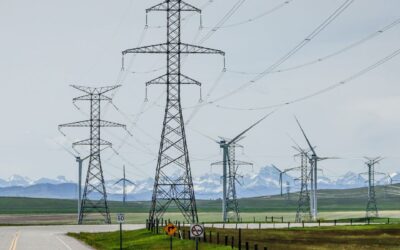By the Canadian Climate Institute and Net-Zero Advisory Body
To meet Canada’s greenhouse gas targets, oil and gas emissions need to stop rising and reduce in line with a net zero pathway.
An emissions cap for the sector can accomplish this. But good design is critical.
The federal government should ensure the cap:
- Delivers real, absolute emissions reductions, not just emissions intensity improvements. Carbon offset should be limited and short-term.
- Does not distract from the imperative to reduce methane emissions.
- Is designed to minimize costs for firms and protect competitiveness to avoid “leakage” of emissions to other jurisdictions.
If Canada wants to achieve its 2030 target for greenhouse gas emissions, the federal government must follow through on its proposed cap on oil and gas emissions. But the details matter, and getting the design right is critical.
Emissions in the oil and gas sector are out of sync with a net-zero pathway. Unlike most other heavy industry sectors like steel and cement, its emissions are still rising. We can no longer afford this trend if we want to avoid the worst impacts of climate change.
Between 2005 and 2019, emissions from oil and gas rose by almost 20 per cent. Without a cap and mandated reductions in place, current policies are not strong enough to drive the greenhouse gas emissions reductions necessary for Canada to meet its climate goals. They contribute our share of the solution to the global problem of a heating planet.
At the same time, investment planning in this sector in today’s global context is particularly tricky. In the short-term, Europe faces an energy shortage while they step up efforts to reduce reliance on fossil fuels, conserve energy, and build more renewable power projects. But in the medium and long-term, declining global demand for oil and gas risks increasing the total costs of Canada’s net-zero transition.
The high cost of inaction on oil and gas emissions
Investments in carbon-intensive projects risk “locking-in” emissions. Every dollar spent on infrastructure that is incompatible with pathways to net-zero will cost taxpayers more in the long run. As the Net-Zero Advisory Body (NZAB) explains, “dead-end” solutions, like new high-carbon oil and gas projects that will operate for decades to come, will make it more expensive for Canada to achieve its emissions target or put it out of reach.
Inaction cost more than action. Oil and gas producers have the wealth to contribute to the societal imperative to reach net-zero.
The sector also has the power to leverage its own expertise, resources, and workforce to implement decarbonization solutions and diversify its operations.
Plus, more oil and gas emissions will mean other sectors are forced to contribute more reductions.
A cap gets to the heart of these unique challenges. It provides greater certainty about an emissions pathway for the oil and gas sector. It creates clear expectations for the sector and a credible mechanism to make sure that new investments and new projects in the sector are compatible with net-zero pathways.
How to design the oil and gas emissions cap
Nevertheless, how the cap is designed matters.
First, the cap should deliver real, absolute emissions reductions in the sector. It should not simply deliver improvements in the emissions intensity of fossil fuel products. This means compliance flexibility mechanisms, like offsets, that reduce the certainty of achieving permanent emissions reductions should be very limited and available only in the short term. As the NZAB outlines, a net-zero pathway for the oil and gas sector should be consistent with an economy-wide pathway to net-zero. This means it cannot depend on reducing emissions from other sectors.
Second, a cap should not distract from the imperative to reduce methane emissions. Methane emissions are severely undercounted. Methane has a heat-trapping potential more than 80 times greater over a 20-year span than carbon dioxide. Thankfully, methane emissions are some of the lowest cost emissions reductions available. Increasing the stringency of methane regulations would also relieve pressure on the cap. It would bring the carbon price in the sector in closer alignment with the rest of the economy, lowering the cost to achieve Canada’s climate goals. Canada should be taking cues from our southern neighbour whose recently passed Inflation Reduction Act. It will drive emissions reductions in key sectors, including methane emissions, to ensure they will be competitive in a net-zero world.
Third, policy design should seek to minimize costs for firms and protect competitiveness. This will avoid “leakage” of emissions to jurisdictions with weaker climate policies. The government has already indicated it will use market-based instruments like carbon pricing that will minimize the costs of achieving the sector’s emissions pathway.
The Canadian Climate Institute’s response to the government’s discussion paper on the cap provides additional options to consider such as avoiding layering multiple policies and compliance mechanisms.
Time for action is short
A net-zero pathway for Canada’s oil and gas sector is key for Canada’s climate goals. A cap on the sector’s emissions can deliver that pathway. If designed well, a cap can also support transformation in the sector that will position it well not only to contribute to greenhouse gas emissions reductions in Canada, but to compete in a net-zero world.
There’s no time to waste.







